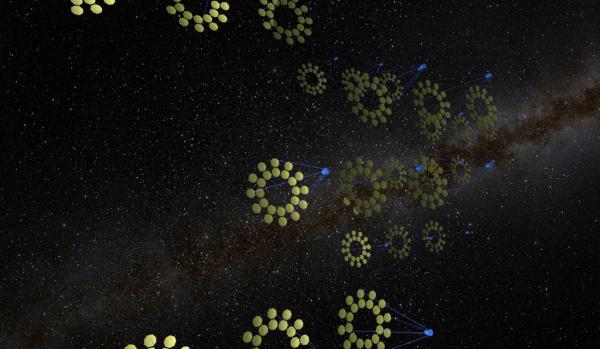BY LETTER
Eyes of Neptune, The
Ultra Long Baseline Virtual Space Telescope | |
 Image from Steve Bowers | |
| Two clouds of space telescopes located at Neptune's Trojan Points, constructed in the First Federation Era | |
The proposal for the Eyes of Neptune were made as part of the Century 26 Plan, a list of scientific projects to be carried out during the 26th Christian century. However, the construction of the hyper telescope had barely begun when the Technocalypse halted the project for over half a millennium. The First Federation revived the plan as part of the Second Renaissance. Two clouds consisting of millions of large telescopes with a total surface area of millions of square kilometres were manufactured using asteroid material, capable of resolving planets in nearby galaxies. However dust and interstellar gas significantly reduced the resolution in most directions.
First light was achieved on Darwin 7, 1221 when the Eyes of Neptune were turned on the white dwarf WD J0917+4638, discovering the curious curlicues in this white dwarf's photosphere, which led to a re-evaluation of the physics of degenerate matter.
The Eyes of Neptune were eventually incorporated into the Argus Array via the Wormhole network, and now form an important part of this extended multispectral telescope system.
Related Articles
- Argus Array
- Luna
- Neptune
- Solsys
- Trojan Asteroids - Text by M. Alan Kazlev
Asteroids caught near the Lagrangian points in a planet's orbit, 60° ahead of and 60° behind the planet. The original Trojans were connected to Jupiter's orbit, but the term is used to designate asteroids or other similar bodies in a relation to any large planet.
Appears in Topics
Development Notes
Text by Tom Mazanec
Initially published on 19 November 2015.
Initially published on 19 November 2015.






